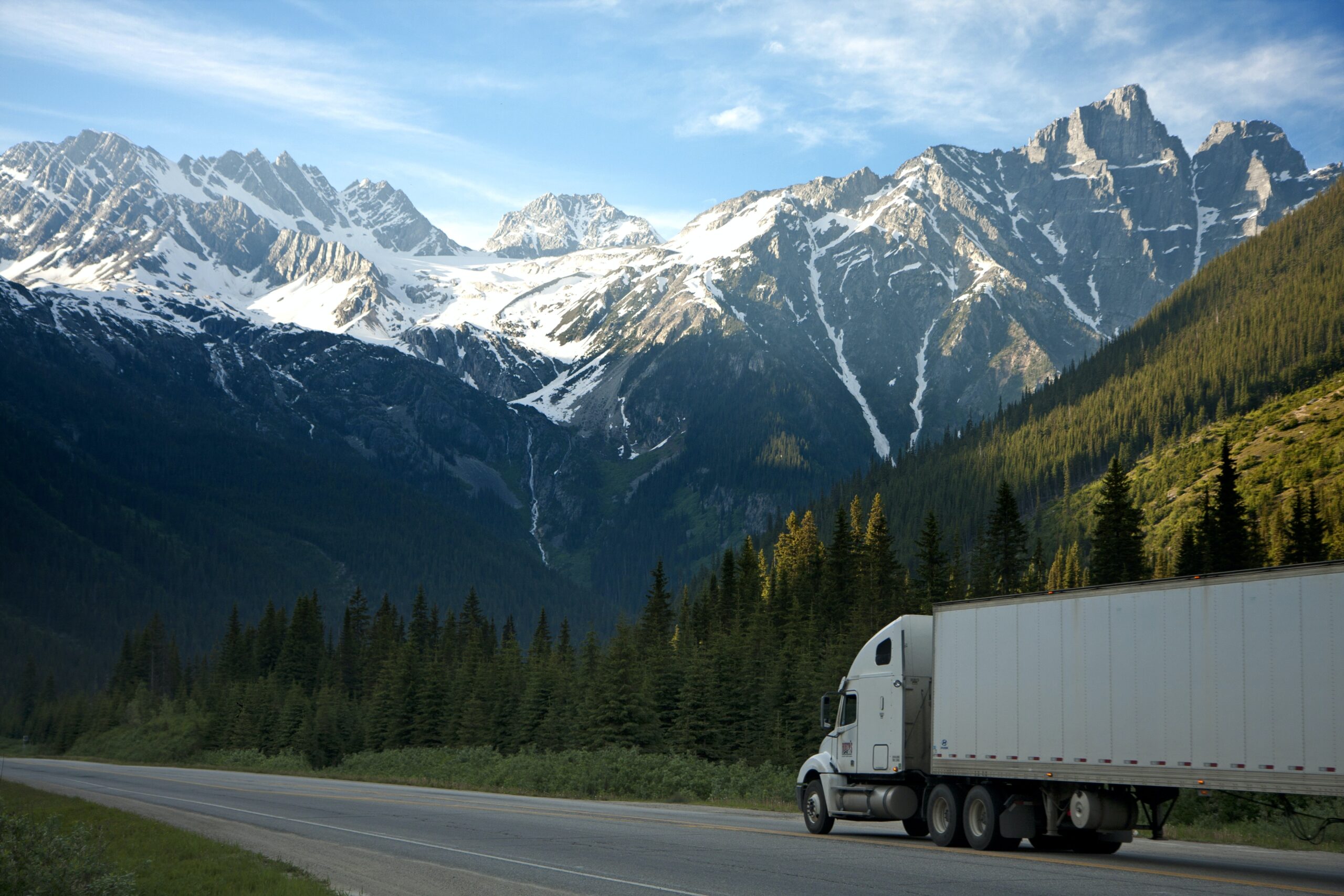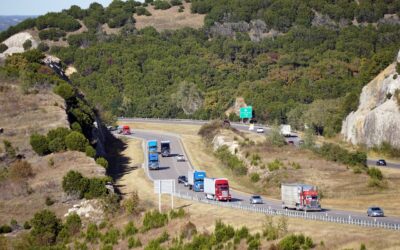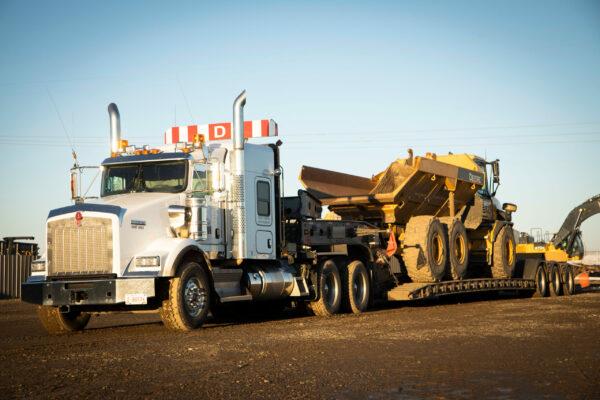Experienced heavy haul truckers haul loads across all kinds of terrain, from winding coastal routes to flat and straight prairie highways to rolling hills and deserts. One type of terrain that requires skill and the utmost regard for safety is mountain driving. Mountainous regions come with all types of variables, including weather conditions, road conditions, the presence of wildlife, the steepness of the hills, and the other drivers on the road.
Considering that nearly 24% of North America is covered in mountains, any driver in the United States or Canada has likely travelled through a mountain pass at some point in their life. It’s one experience to drive in a vehicle or even with a camper in tow. It’s a whole other scenario when hauling an oversized load or a heavy shipment. With safety training and practice, any driver can learn to master driving through mountains, but if you’re inexperienced or a DIY-type person, here are five reasons to consider hiring a professional and not attempting to do it yourself.
5 Safety Precautions for Heavy Hauling in the Mountains
Safety should always be a priority when moving heavy shipments from point A to B. No driver wants to risk damaging their truck, trailer, or the load of their customer. Failing to follow safety regulations can not only lead to damaged equipment but can put the public at risk and lead to hefty fines.
To ensure your trip goes as smoothly as possible, pay attention to the grade of each incline, set a slow and steady pace for your truck, watch the weather conditions at all elevations, allow plenty of space between you and traffic, and know when to use your last resort runaway lanes. Being prepared for any type of situation helps you improve your skill as a heavy hauler.
The Importance of Grade
The grade of an incline is a measurement of how steep the road is. The larger and heavier your load is, the more challenging and steeper your grades become. If you’re hauling 10,000 pounds or more, you’ve got a lot more weight to carry up a hill than a regular vehicle or an F150 truck does. The same goes for downhill. When you’re pulling tens of thousands of pounds, you’re going to have a lot more momentum building up behind your truck. Knowing how that grade affects your truck is essential to avoid losing control.
Each hill you climb will have the grade scale listed on road signs. Watch for those and adjust your speed and tactics. The posted grade will correspond to how fast you should go during your ascent or descent. The best strategy is to take it nice and slow, even as you near the bottom. You never know what could lie in wait, from black ice to wildlife on the road.
Slow and Steady
It’s very difficult to judge an incline by looking at it, which is why knowing the grade matters. There may be smaller hills that do not indicate the steepness of the incline. No matter the steepness, always take it slow and steady. If you attempt to go too fast on the uphill climb, your truck can overheat, even in the winter. You can avoid problems with your truck by slowing down and allowing yourself plent of time for your trip. On the descent, going too fast increases the risk of losing control. Use your hazard lights to alert traffic you’re going at a slower pace than the speed limit and keep yourself safe.
Pay Attention to the Weather
Watching the weather forecast before hitting the road is another important factor for mountain driving. Different elevations can bring dramatically different weather patterns. While it may be raining at the bottom of the hill, there could be snow, slush, and ice on the top and on the way up. Changing weather can also be a factor in mountains in all seasons. Here are a few quick tips to better prepare you for your route:
- Check the forecast before leaving.
- Sign up for weather alerts on your phone.
- Choose the best route for your load.
- Choose lower routes with lower grades when possible.
- Chain up your tires at the bottom of the hill when notices are posted.
- If roads are too ice, wait for sand trucks to come before attempting descent.
Give Yourself Plenty of Space
Giving yourself plenty of time and space between yourself and the vehicles around you helps prevent crashes. Just because you’re following the rules of the road and avoiding distracted driving does not guarantee the cars around you are. Never assume other cars or truck drivers are driving safely. Ample spaces mean you have space and time to correct yourself and avoid other drivers that could be losing control.
Last Resort Options
Commercial vehicles do everything they can to avoid losing control of mountains. When experienced drivers suspect they’re losing traction or control, they’ll use the gravel on the edge of the should and lightly apply the trailer brake to straighten out. In snow, it’s best to make your own tracks rather than drive in the tire trails other vehicles made.
In the worst-case scenario, an out-of-control truck and heavy load need an exit when travelling down steep grades. Mountain passes in North America have runaway lanes designed to save an out-of-control truck as a last resort. These lanes are there for your safety and everyone else on the road around you. Some runaway lanes have soft material that causes your truck to sink into it and stop. Other runaway lanes are short inclines that slow your truck down, allowing you to roll backwards to a safe stop off the main highway—this type of runaway lane is commonly found in Western Canada.
The Best Advice for Mountain Driving?
Our best advice for heavy hauling on mountains? Don’t be overconfident. Take your time, prepare your load, and follow these five tips. No one will pay you for a load if you don’t make it to the other side.
Heavy Haul Trucking Services in Canada and the United States
Need an experienced, professional heavy haul driver to transport your load? Trusted Dispatch has a network of vetted drivers across Canada and the United States. Get started today with your free, instant quote.





